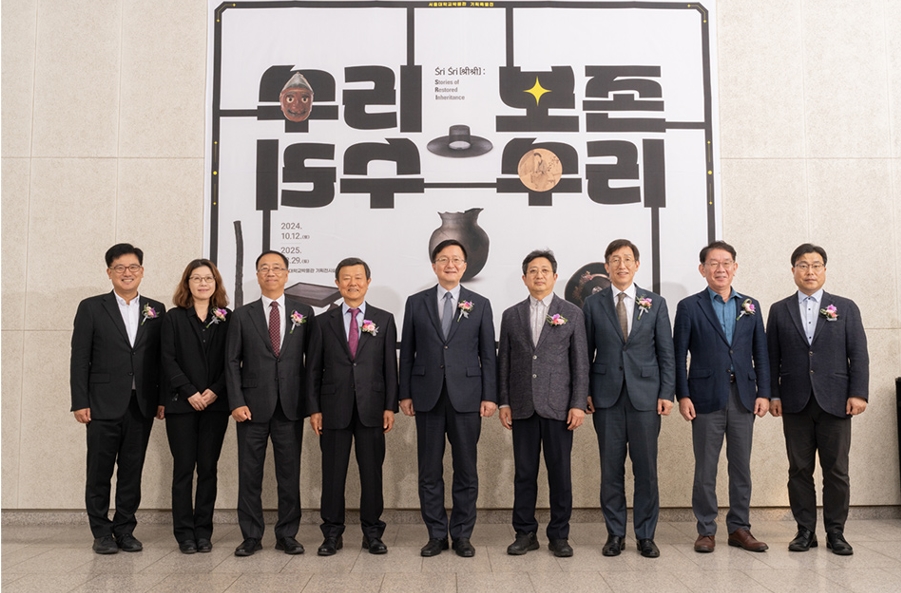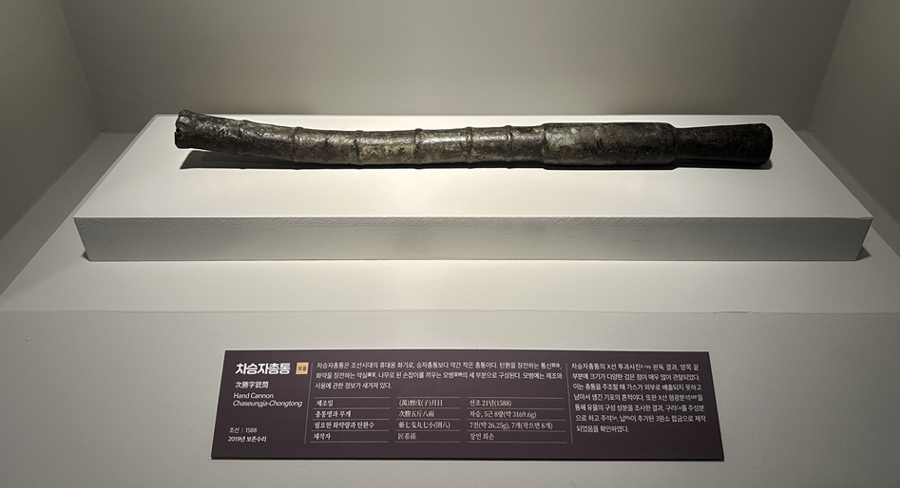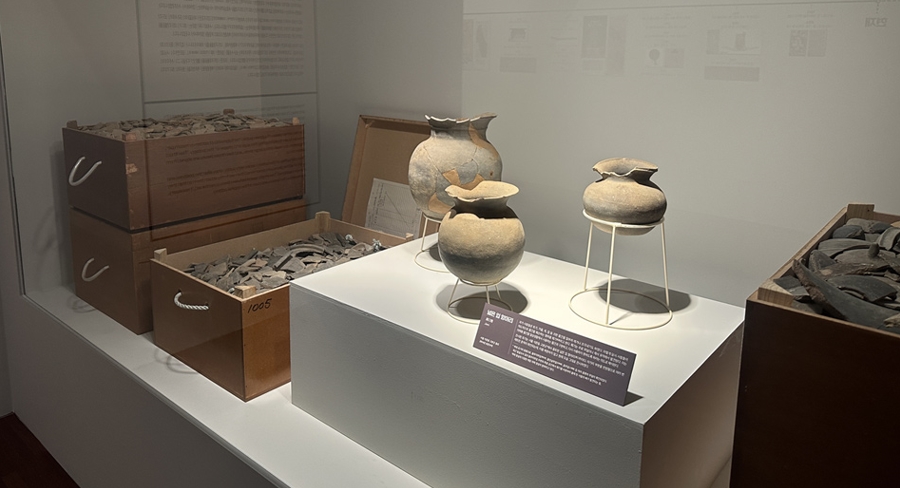The preservation and restoration of cultural artifacts go beyond mere technical processes; they are vital in connecting traces of the past with the future. Since its opening, the Seoul National University Museum has undertaken conservation and restoration projects, and since 2017, with the support of the Korea Heritage Service, these processes have become more systematic. In this context, the special exhibition Sri Sri: Stories of Restored Inheritance, which began on Saturday, October 12, sheds light on how artifacts damaged over decades are being restored to their original value. The exhibition runs until Saturday, March 29, 2025, and is open to visitors from 10 a.m. to 5 p.m. on weekdays, excluding Sundays and Mondays.

Opening Ceremony Photos of the Special Exhibition
A Journey of Preservation and Restoration Connecting Past and Present
This special exhibition focuses on the process and significance of artifact conservation and restoration. At the heart of the exhibition are a variety of restored artifacts, including the Medium Seungja Chongtong Gun, pottery from the Ancient Tombs in Seokchon-dong, and traditional headwear. Lee Jeong-eun, a curator in the Department of Archaeology and History, emphasized, “Artifact conservation and restoration are not simply about repairing damaged parts, but about preserving and restoring the temporal value that the artifacts hold.” In line with this purpose, the artifacts selected for the exhibition were carefully curated by various departments of the museum, and many of them are being revealed to the public for the first time through this opportunity.

Medium Seungja Chongtong Gun
Among the exhibited artifacts, many posed significant challenges in restoration. The Medium Seungja Chongtong Gun, a crucial artifact for understanding the military context of the Joseon Dynasty, stands out as a prime example of the technical challenges involved in conservation. Designated as a treasure in 1986, the gun was heavily corroded and had suffered structural damage, but through the restoration, it has regained its original grandeur. Curator Lee Jeong-eun remarked, “A blend of traditional metalworking techniques and modern technology played a key role, allowing us to revive both the historical context and aesthetic value of the artifact.”

Traditional headwear
The restoration of traditional headwear required a particularly intricate and delicate process. Curator Rashila explained, “Some of the materials used in headwear are difficult to obtain today,” emphasizing that the key of the restoration lies in closely replicating these original materials. Restoration experts devoted extensive effort to experimenting and searching for alternative materials that most closely resembled the traditional ones, ultimately preserving the original form of the headwear while restoring its historical value. This special exhibition deeply showcases how the meticulous restoration processes harmonize technology and artistry, conveying the traces of time embedded within each artifact.

The wide-mouthed jar
Meanwhile, the wide-mouthed jar excavated from the Ancient Tombs in Seokchon-dong holds special significance as it has not been restored, unlike the other artifacts. Although the jar was complex in shape and comprised numerous fragments, it was intentionally left unrestored based on the judgment that preserving its damaged state held greater historical context than simple restoration. Curator Lee Jeong-eun emphasized, “Sometimes, the damaged state of an artifact can convey traces of the past more truthfully than restoration itself.” In this way, the special exhibition highlights various approaches to conservation and restoration by showcasing not only restored artifacts but also those intentionally left unrestored. This allows visitors to recognize that artifacts are not merely remnants of the past; they encapsulate the history and culture of their time. Additionally, the process of restoration is not just a technical repair but an important task that connects heritage to the future.
Stories Embedded in Artifacts: The Value and Philosophy of the Exhibition
The restoration of artifacts goes beyond technical challenges; it encompasses a philosophical process that revives the historical context and cultural significance of the objects. This special exhibition introduces the public to this philosophical approach through calligraphy artifacts, especially old paintings displayed with scrolls, folding screens, and frames. Among them, the eight-panel folding screen of The Painting of Crown Prince Munhyo’s Installation Ceremony offers visitors an opportunity to grasp the overall context of royal ceremonies. Curator Rashila emphasized, “This restoration work allows us to view The Painting of Crown Prince Munhyo’s Installation Ceremony as a cohesive piece for the first time, rather than as separate panels,” highlighting its significance.

The Painting of Crown Prince Munhyo’s Installation Ceremony (left), Jang Seung-eop’s Painting (right)
The goal of this exhibition is to inform the public that artifact restoration is not merely a physical repair but an essential process for the ongoing preservation of cultural heritage. Curator Lee Jeong-eun explained, “Artifact restoration is not just about recreating the past; it is a meaningful endeavor that connects artifacts with contemporary society while maintaining their authenticity.” The philosophy of restoration focuses on preserving the original state of the artifacts, but their value deepens as we seek the best methods within practical constraints.
Seoul National University Museum plans to expand its ongoing research and educational programs related to artifact preservation and restoration. Curator Rashila emphasized, “Artifact conservation and restoration go beyond simple replication; they are crucial processes for fully transmitting our cultural heritage to future generations,” highlighting the need for continuous research and the development of specialized personnel. These efforts are expected to contribute to the museum's role as not just a space for displaying artifacts, but as an important educational venue for widely promoting the value and significance of cultural heritage.
The special exhibition “Sri Sri: Stories of Restored Inheritance” highlights the importance of restoring past artifacts and breathing new life into them. Seoul National University Museum will continue to connect the past, present, and future, fostering a deeper understanding of cultural heritage preservation and its significance. Seizing this opportunity to reevaluate the meaning and importance of restoration will help cultivate an interest in cultural heritage preservation.
SNU Student Reporter
Joo Seo-hyun (Department of Religious Studies)
wynterfrgrance@snu.ac.kr
Translated by Jiwon Seo (Department of Anthropology)

